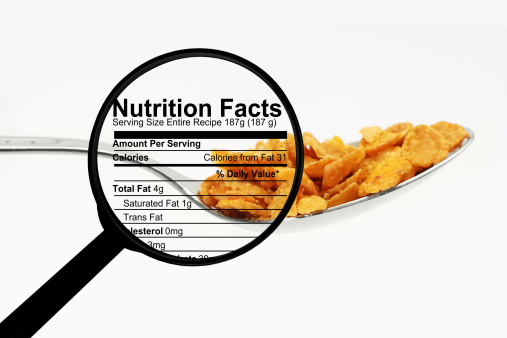The UK’s Royal Society for Public Health (RSPH) has proposed that labels be changed on prepared snack foods to detail how much exercise would be required to “burn off” the equivalent calories consumed. In a recent commentary for the British Medical Journal, RSPH chief executive Shirley Cramer noted that current label information listing the amount of calories has not been a deterrent to the overconsumption of high calorie processed foods and snacks which cause obesity and a host of related health problems for kids and adults. “We need to be creative… in your face… so this is a tactic, or a strategy, in the war on obesity,” she said.
Cramer believes that using icons instead of words may be more effective. “People find symbols much easier to understand than numerical information, and activity equivalent calorie labels are easy to understand, particularly for lower socioeconomic groups who often lack nutritional knowledge and health literacy,” Cramer wrote in her commentary. “For example, the calories in a can of fizzy drink take a person of average age and weight about 26 minutes to walk off.”
The RSPH has stated that changing the labels may help change people’s eating behaviour when they see how much exercise is required for consuming just one snack. In theory, it sounds workable but critics of this idea don’t like that it is a calorie-centric approach that ignores the many benefits of exercise beyond burning calories. Others feel that it could lead some to choose nutritionally deficient snack foods over healthier foods with the same amount of calories and miss out on potential benefits of vitamins, minerals and antioxidants the healthier foods would contain.
The UK’s Royal Society for Public Health (RSPH) has proposed that labels be changed on prepared snack foods to detail how much exercise would be required to “burn off” the equivalent calories consumed. In a recent commentary for the British Medical Journal, RSPH chief executive Shirley Cramer noted that current label information listing the amount of calories has not been a deterrent to the overconsumption of high calorie processed foods and snacks which cause obesity and a host of related health problems for kids and adults. “We need to be creative… in your face… so this is a tactic, or a strategy, in the war on obesity,” she said.
Cramer believes that using icons instead of words may be more effective. “People find symbols much easier to understand than numerical information, and activity equivalent calorie labels are easy to understand, particularly for lower socioeconomic groups who often lack nutritional knowledge and health literacy,” Cramer wrote in her commentary. “For example, the calories in a can of fizzy drink take a person of average age and weight about 26 minutes to walk off.”
The RSPH has stated that changing the labels may help change people’s eating behaviour when they see how much exercise is required for consuming just one snack. In theory, it sounds workable but critics of this idea don’t like that it is a calorie-centric approach that ignores the many benefits of exercise beyond burning calories. Others feel that it could lead some to choose nutritionally deficient snack foods over healthier foods with the same amount of calories and miss out on potential benefits of vitamins, minerals and antioxidants the healthier foods would contain.









